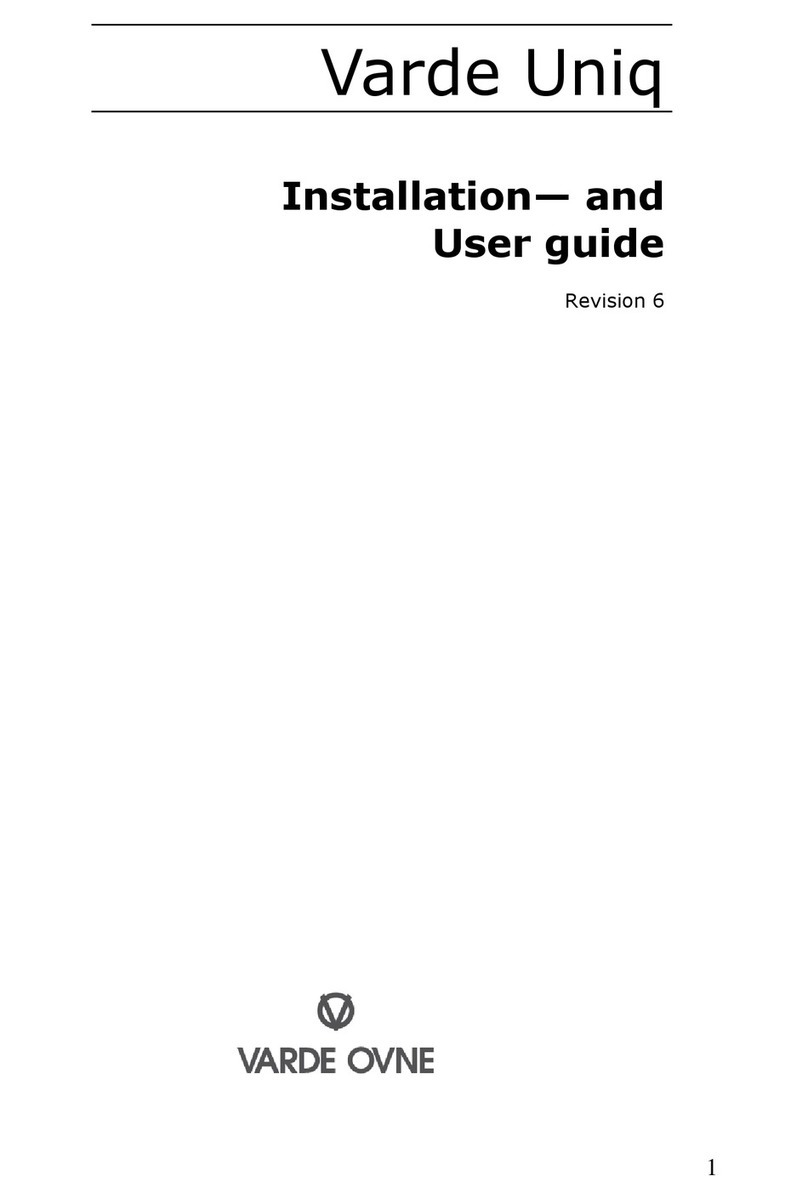9
How to light and stoke a fire
The first time you light up the stove, the enamel will temper and give off some smoke and a
slightly burnt smell. We recommend that you leave doors and windows open, as airing the room
will make the smell disappear.
This tempering softens the enamel, making it susceptible to damage. Therefore exercise caution
and avoid touching the enamel. We also recommend opening the door to the stove at regular
intervals during the first couple of hours to prevent the rope seal from sticking to the enamel.
Never use highly flammable liquids such as methylated spirit or petrol for lighting up!
We recommend using ‘top-down’ lighting, where you light the wood at the top of the combustion
chamber and not at the bottom. This is the most environmentally friendly method to light a fire.
The method will also help keep the glass clean. Place two small logs on the bottom plate of the
combustion chamber (approx. 0,5– 0,8 kg) with a small distance between each log. Place 10 –
15 smaller sticks (approx. 0,8-1,2 kg) in a cross on top of the logs, and 2 – 3 firelighters at the
top and in between the sticks.
A thin layer of ash at the bottom of the stove makes it easier to light the fire.
Before lighting the stove, (See page 10 for how)
Once the Fire burns, remember to close the Air Inlet again. Otherwise, the stove and chimney
might become overheated, which would invalidate the warranty.
A slight amount of soot may build up on side glass during the start-up fire. This is normal and
vanishes after a period.
Once the kindling has reduced to embers, we recommend opening the door slightly for a couple
of seconds to neutralise the negative pressure in the combustion chamber before opening the
door completely.
Place 2 to 3 logs in a cross on top of the embers (approx. 1.2 kg) and close the door again. To
make sure the wood ignites quickly, we recommend briefly opening the ignition air vent and
make sure you remember to close it again once the fire gets going. You can then adjust the
combustion air according to your heating requirements.
Take care not to shut off the air supply completely, otherwise the fire will die. The fire should
always burn bright and clear.
In most instances, however, you will have to identify the best combustion air settings yourself,
as the height and draught of your chimney as well as the quality of the firewood are decisive
factors in determining the best settings for your particular stove.
If the nominal heat output of your stove is too high compared to your heating requirements, you
can reduce the output as follows:
- Stoke a smaller amount of wood than usual, for example 1 kg, preferably consisting of 2 – 4
smaller pieces of wood. Apply full air to ignite the wood properly before reducing the combustion
air, perhaps down to approx. 40%. Be careful not to reduce the air supply to the point that the
fire dies. The fire should always burn bright and clear.
With this method it is possible, depending on the chimney, wood quality, etc., to reduce the
stove’s heat output from a nominal 5,5 kW down to perhaps 3,5 kW.
Please be aware that it can lead to poor combustion if you reduce the combustion air too much,
resulting in a lower efficiency and increased emission levels (increased pollution).
When refilling the stove with wood, we recommend opening the stove door once only embers
are left in the combustion chamber. Opening the door while flames are still burning and produc-
ing smoke and gas might cause smoke to escape into the room.
If you have problems lighting or operating the stove, see the section on Troubleshooting.




























